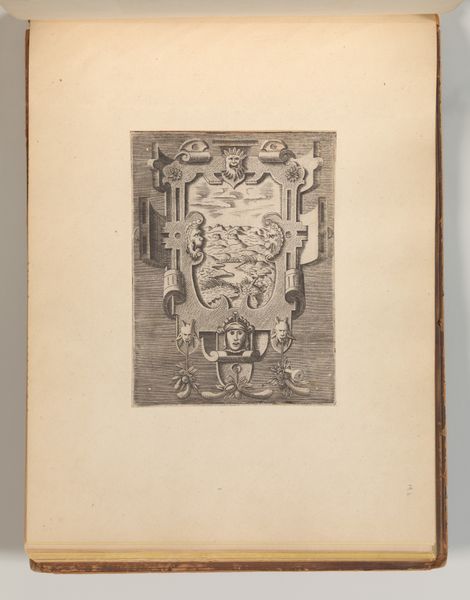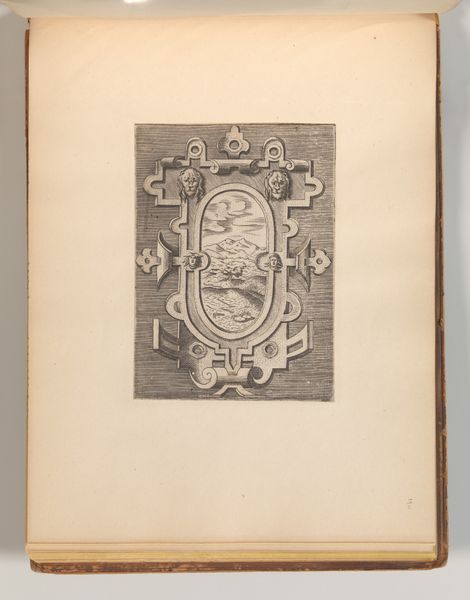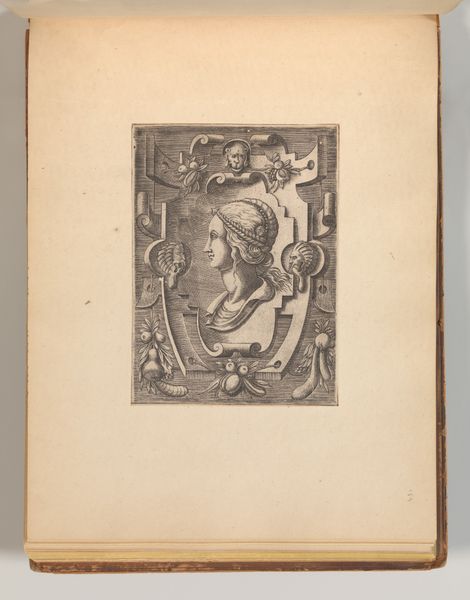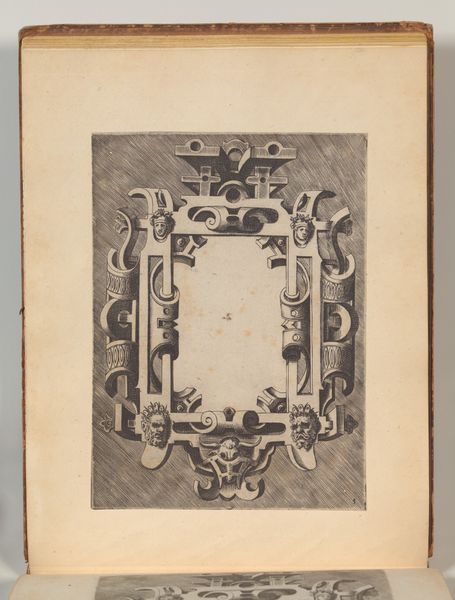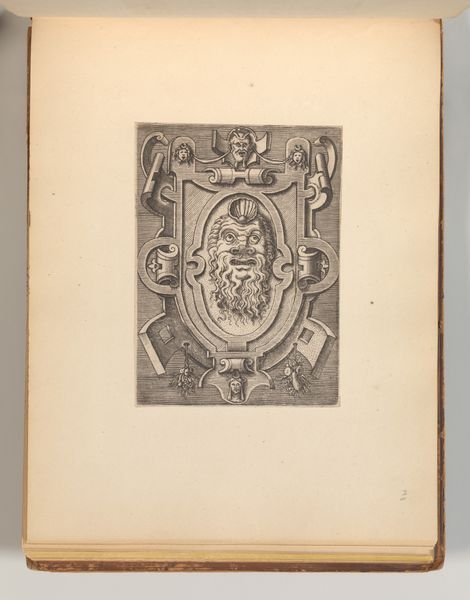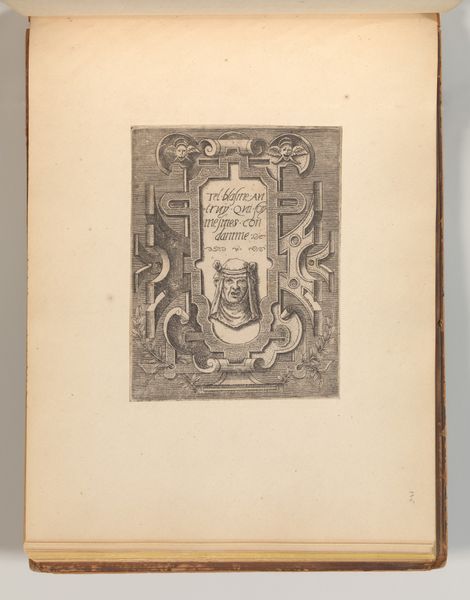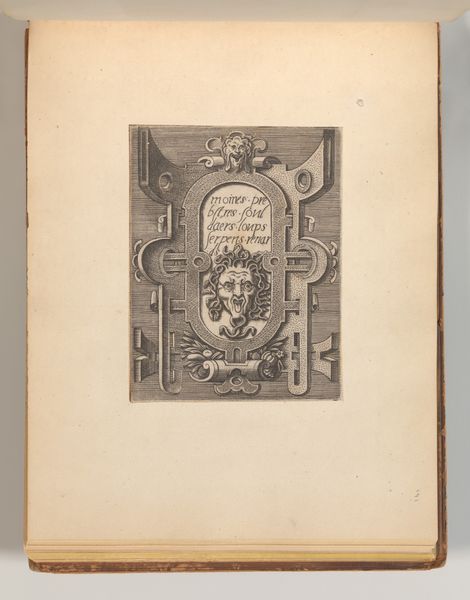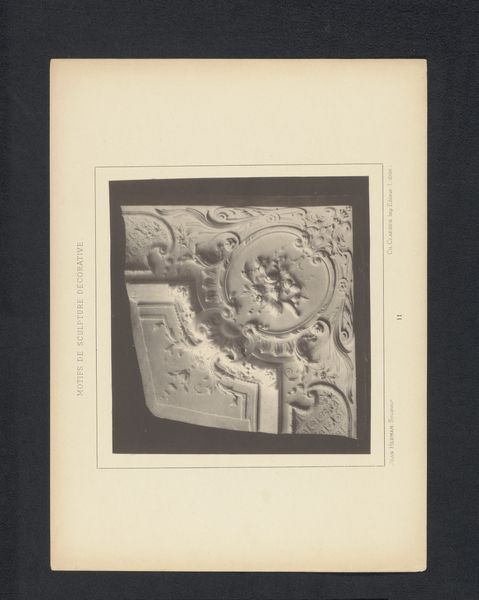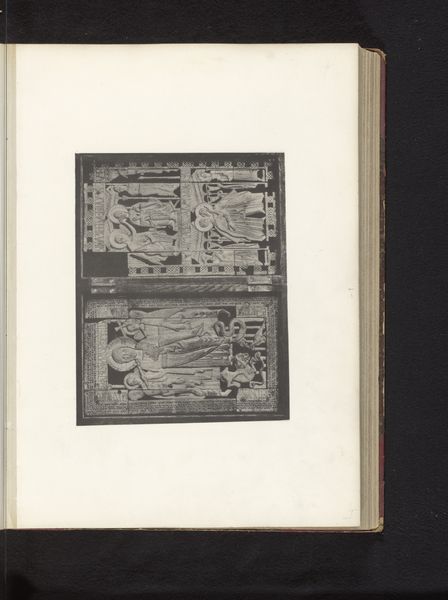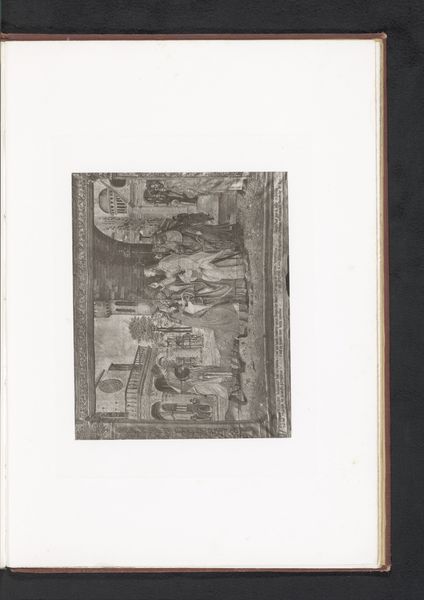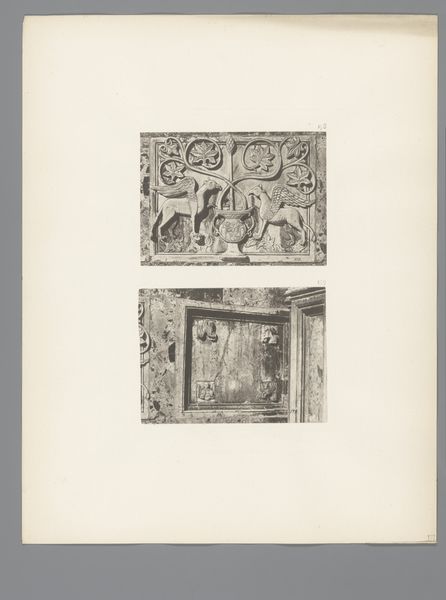
Series of Cartouches, in: Targhe ed altri ornati di varie e capricciose invenzioni (Cartouches and other ornaments of various and capricious invention, page 36) 1540 - 1560
0:00
0:00
drawing, graphic-art, ornament, print, engraving
#
drawing
#
graphic-art
#
ornament
#
ink paper printed
# print
#
form
#
11_renaissance
#
geometric
#
line
#
history-painting
#
italian-renaissance
#
engraving
Dimensions: Sheet: 7 7/8 × 10 5/16 in. (20 × 26.2 cm) Plate: 5 1/8 × 11 13/16 in. (13 × 30 cm) Overall: 8 1/4 × 10 5/8 in. (21 × 27 cm)
Copyright: Public Domain
This engraving, part of a series of cartouches by Cornelis Bos, presents a complex ornamental design, showcasing a motif central to the Renaissance: the grotesque. Here, we see it manifested as a lion's head, framed within elaborate, intertwining patterns. This symbol, which experienced a revival in the 15th and 16th centuries, finds its roots in ancient Roman art. These grotesque faces were not merely decorative but were believed to ward off evil, embodying a protective function. Consider the image of Medusa, whose petrifying gaze adorned shields and doorways, repurposed in Renaissance ornament. This cartouche, with its lion's visage, evokes similar psychoanalytic depths. The fierce expression, frozen in time, engages us on a primal level, stirring both fear and fascination, a potent reminder of humanity's enduring relationship with symbolic representation. It shows the non-linear progression of symbols, evolving and taking on new meanings across time.
Comments
No comments
Be the first to comment and join the conversation on the ultimate creative platform.
